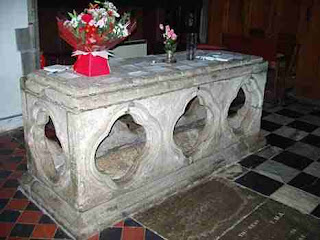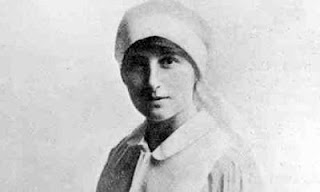Springfield
Old Boys substitute John Oakes made footballing history in March 1968
when he was ordered off without even playing. In the only incident in
a tense game between Kingsley Youth Club Oakes ran on to the pitch
with several spectators when a skirmish developed between players and
fans. The ref ordered him from the field and to the dressing room.
Had a Springfield player been injured, Oakes still wearing a track
suit could not have been bought on.
The
after effects of the Foot and Mouth epidemic that had hit
Staffordshire earlier in 1968 were gradually becoming overcome. The
first distressed sale of cattle after the outbreak took place at
Waterfall. It should have taken place the previous November. Another
sign of a return of normality was the first wedding after the
epidemic which took place at Rushton Church when Miss Christine
Knowles married Roland Sales. Endon Secondary Schools annual cross
country took place with a slight change of route because of the
disease. One school record was broken when John Lockey romped home
some distance ahead of the second place runner getting back in
14minutes 38 seconds.
The
Easter school leaver had plenty of choice with many companies vying
for their employment. All the major employers in North Staffs were
featured in a 8 page spread with particular large adverts from
Slimma, Wardles and White's . The most attractive opportunity for the
young person in North Staffordshire at the time was probably the
apprenticeship at the Michelin with opportunities in draughtsman,
craft and technology and business administration. Perhaps the most
poignant promotion was a full page spread for the National Coal
Board- “Coal's heading for a bright future -be part of it”. Of
course from the perspective of 2013 we now know that Coal in North
Staffordshire had under 20 years before the last pit closed. The
advice of the local paper for the young worker was as telling then it
is now “ The Easter school leaver would be wise to look ahead . He
will be tempted by the job that paid the most money. However, if he
is wise he will look further ahead In a technological world the man
without skills will be in an increasingly difficult position”
Language
of 1968 used to describe vulnerable people would make people today
wince if used now. Take the group that would be referred to as people
with learning difficulties the words used then were brutal.
Reporters were taken on a visit to the Adult Training Centre where “
subnormal and socially inadequate” young people were made work
ready. The unit offered training in self reliance, work attitude and
abilities to work without supervision. The ATC had contracts to
supply work for the GPO amongst others. The article noted the
importance of relationships between “ the normal and the subnormal”
which can be beneficial to both. Normal youngsters learn to
understand that there are people less fortunate and there is
satisfaction obtained from helping others”
A
distinguished visitor to Leek High's prize giving was the Speaker of
the House of Commons Dr Horace King who spoke to the pupils feeling
that he had to explode one of the myths about Parliament that it
“consists of faceless men belonging to the party block without
minds of their own. No two Labour men and no two Tory men are the
same.” He was probably correct in that the Parliament of the 60s
contained such giants as Enoch Powell and Michael Foot as well as
people with great experience of life in peace and war.
Councillors
discussed whether the controversial film of the novel “Ulysses”
should be shown in Leek. Reluctantly they agreed that it should be
shown. Some Councillors felt that they should protect the public from
itself. Cllr John Sales believed that if people wanted to see the
film they ought to be allowed “ to roll in your own moral and
intellectual excreta”.














